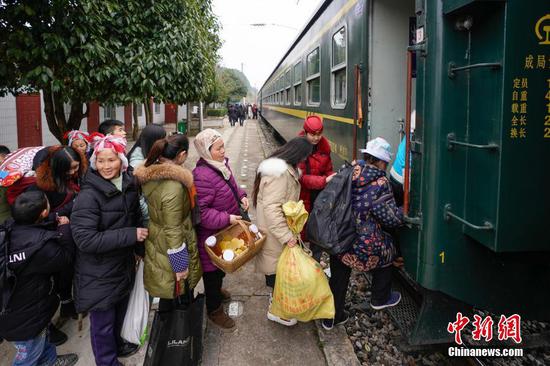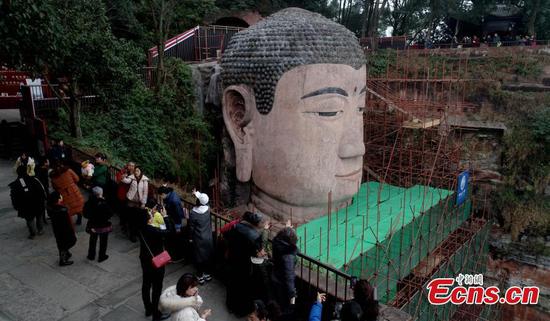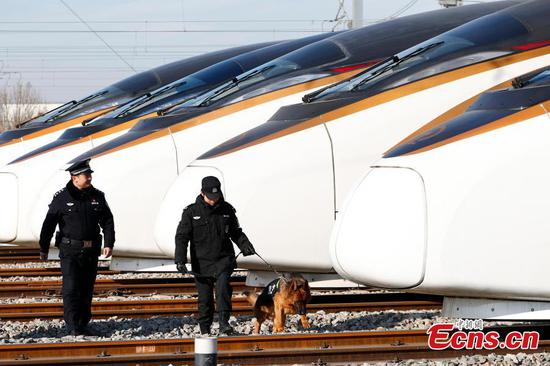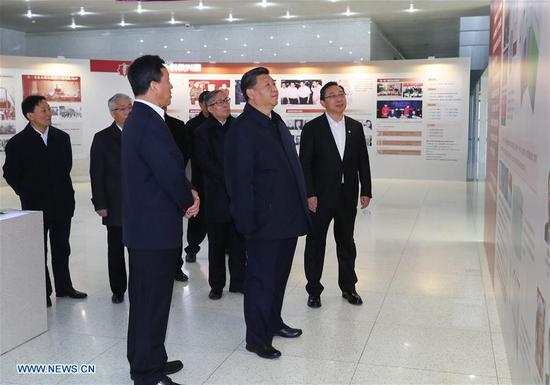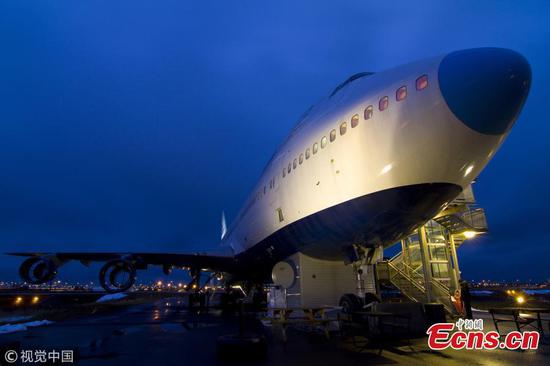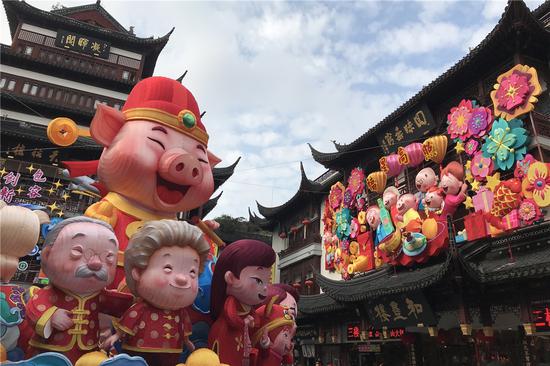
Children play at Beijing's iconic Bird's Nest stadium, which is now a tourist hot spot. (Photo by Feng Yongbin/China Daily)
Industry is set to restructure as consumers spend billions of yuan on rich experiences
China's online tourism sector is witnessing a boom, and firms in the business are growing rapidly, on the back of Chinese wanderlust.
To exploit the emerging opportunities, online travel agencies or OTAs are offering new, customized products and services.
They are encouraged by the fact that in 2018, the market scale of OTAs reached 1.08 trillion yuan ($160 billion), adding 30 percent year-on-year, hitting a record high, according to a report released by market consultancy ASKCI Consulting Co.
Last year, Chinese travelers spent $762 per person abroad, exceeding $276 spent by non-Chinese travelers. By 2023, Chinese travelers are expected to spend nearly $1,334 per person a year on overseas trips, according to a report released by the Chinese Academy of Social Sciences this month.
Sensing a maturing market, existing players have started consolidating or expanding their operations. In fact, the market itself is seeing a bit of restructuring as the number of players gets rationalized, with a few major firms set to dominate proceedings from now on.
Five OTAs hold the key to the fortunes of Chinese tourism as they command a collective 80 percent market share.
Ctrip is the big boy of the pack. In October 2015, it swallowed up Qunar, a travel firm that was beginning to find traction. According to consultancy Frost& Sullivan China, the combine of Ctrip and Qunar commands a more than 60 percent share of the OTA market.
Fliggy from the Alibaba stable, Tongcheng-Elong Holdings Ltd, which is backed by Tencent, and Tuniu Corp are the other three big players. Ctrip also holds stakes in Tongcheng-Elong and Tuniu.
Last year, Ctrip further extended its operations and expanded its distribution across the sector. Its total sales revenue jumped 30 percent over 2017 to reach 690 billion yuan, it said.
"By reinforcing their moats, industry leaders will become even stronger, and the sector will present a higher competition threshold, and the market centralization will become more obvious," said Neil Wang, president of Frost &Sullivan China.
"The business model of the online travel sector in China boasts high gross profits and high user stickiness. Traditional offline travel agencies are seriously homogenized and their user stickiness is lower.
"In the future, more offline tourism businesses will turn to online operations, with an aim to achieve better integration and utilization of industry resources, and provide more convenient and efficient services to consumers."
OTAs are setting up offline stores as well to expand their presence and attract more consumers. Ctrip said it plans to set up more than 8,000 physical stores nationwide, including in smaller towns and counties, this year.
"Chinese consumers are spending increasingly more money on services. Tourism is the mainstay of consumption of services. Tourism is becoming a main driver of China's economic growth," said Sun Jie, CEO of Ctrip, in an open letter in late December.
She said during the period of macroeconomic adjustment, the tourism industry can buck any possible slowdown by driving a trend of rapid growth. For, consumers are more willing to take a break and travel around the world. She said she is optimistic about the growth potential of the tourism industry in China.
Dai Bin, director of the China Tourism Academy, said Chinese tourists are seeking more diverse experiences while traveling abroad. Middle-class consumers, the core group of the outbound tourism market on the Chinese mainland, are more willing to slow down the pace of life and enjoy in-depth and tailored travel experiences, encouraged by their growing spending power and evolving tastes.
"More Chinese travelers prefer independent and flexible trips, instead of traveling with tour groups. Besides, those who spend a lot of money shopping account for only a small portion of the total now, and more people are willing to experience local events, food and culture," he said.
This trend, however, has created certain challenges for OTAs. Rapid growth has led to shortage of skilled manpower. Qualified tourism professionals are few and far between.























